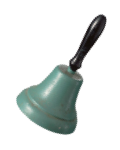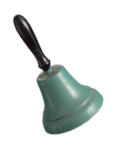Death is an important dimension of the everyday lives of Singaporeans. Our perceptions and conceptions of death, and the rituals, beliefs, practices and spaces associated with it are deeply embedded in the cultures, heritage, and identities of the different communities in Singapore. Nevertheless, they have also changed with the rapid development and transformation of Singapore economically, socially, and spatially. The topic of death in Singapore allows us to explore interesting perspectives on how burial and exhumations have continuously evolved as Singapore develops. A look into the funeral and burial services of the Chinese community in Singapore unveils that many of the rituals and practices believed to be traditionally static and unchanging have been evolving over the years.
A look into the funeral and burial services of the Chinese community in Singapore unveils that many of the rituals and practices believed to be traditionally static and unchanging have been evolving over the years.
Before the construction of high-rise HDB flats, funerals were held differently in the Chinese kampongs (“village” in Malay). Each kampong has a unique identity and culture, differentiated by their linguistic roots, e.g., Hokkien. One of our interviewees, Mr Lee, a chanting priest, shares that the village chief was usually the one who had either received higher education, possessed more knowledge on ritual processions, or simply the wealthiest. Thus, the deceased would have to be buried according to the kampong’s traditions. For instance, a Hainanese settler in a Hokkien kampong would be given a Hokkien funeral. The deceased would rest on a straw mat (“草席 cao xi” in Mandarin) in their own house, while their family went to raise funds for the purchase of a coffin. The act of going around the kampong, door-to-door, is believed to be the origin of the term “condolence money” (“白金 bai jin” in Mandarin).
Now, people get to choose the type of funerals they want - Hokkien-style, Christian-style, and many more. The funerary industry has continuously evolved to keep up with the changing demands of the living, and the dead.
Funeral and exhumation rites have also changed as Singapore progresses.
Exhumations were an uncommon sight in the olden days. The Chinese believed that the living should not meddle with the dead, and unless it was called for [due to feng shui (“geomancy” in Mandarin) or dreams of the dead requesting for exhumation], exhumations were deemed unnecessary.
Earlier exhumations required more preparation work before “ground-breaking” (to hack open the coffin, known as “破土 po tu” in Mandarin). Now, as the state rushes to free up more land for state development, exhumations are done more hastily. In the past, exhumations were done before dawn, at one go, and required the presence of family members. Now, to hasten the process, exhumation workers would first unearth the coffin and prepare the set-up before the arrival of families to witness the final exhumation process (retrieving the bones).
Funerals in the past were occasionally held in communal town centres in areas such as Chinatown. The organisation of funerals was complicated, as there was no one-stop-service in the past. As we can now see, the funerary industry has transformed to provide all necessary services as a package for families to choose from. Thus, the organization of funeral and funeral rites are now simplified, and the emotional stress on families to organize a funeral are alleviated.
“Do you know, a lot of people want the blankets you see at the funerals?” says Mr Yeo, who shared with us his knowledge on burial rites. It is said that the blankets help children sleep more peacefully, and the blankets were of good quality in the past. Mr Yeo also shared about a rare funeral rite: “breaking the hell’s gate” (“破地狱 po di yu” in Mandarin), believed to relieve the deceased’s sufferings. It is conducted by a group of Hakka (“古来 gu lai” in Mandarin) priests that he had to engage from Malaysia. It was a tiring rite, involving not only the priests but also family members who have to follow the priests while jumping and going around the sand dragon to “enter” hell and guide the deceased out of it. Now, these priests are hard to find, and funeral rites are also simplified.
Yet, as funeral rites and practices continue to evolve, one area that appears to be lacking would be a willingness to learn about death and burial, especially among young Singaporeans. Death remains a taboo subject to be avoided in discussions, and the intimate knowledge behind such traditions may become less commonplace in the future. This taboo also translates physically into how practices surrounding the deceased appear to be segregated from the living. Cemeteries are tucked far away from residential spaces, while funerals held in void decks become smaller and shorter. This lack of integration between the living and the dead may become problematic in the future, as competition for Singapore’s scarce land grows. Therefore, instead of pushing away the dead, perhaps embracing them will allow Singaporeans to better understand death’s inseparable place in society.
This photo-essay is written by Charis Cho and Zachary Tan from Nanyang Technological University.
About the School of Humanities at Nanyang Technological University (NTU), Singapore
This photo essay is based on research done by students from the History Programme based in the School of Humanities at Nanyang Technological University (NTU), Singapore. With aims to be one of the leading centres of historical scholarship on modern and contemporary Asia, NTU History is dedicated to understanding and teaching modern history from a global perspective. Comprising young, dynamic scholars within the School of Humanities, the faculty is committed to training students to not only think critically but also to apply interdisciplinary methods to identify and address contemporary problems from historical perspectives. Visit https://soh.ntu.edu.sg/Programmes/history/Pages/Home.aspx for more information.
Enjoyed this programme? Let us know what you think here and receive a $5 Grab Food voucher*.
*limited to the first 500 complete responses |


